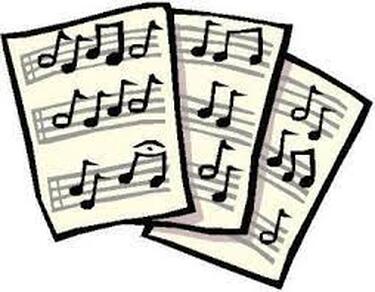 I’ve been thinking about my writing prosses a lot lately. I’m coming off a long stint of writers’ block. When I have these periods of writers’ block, I start thinking about how I can improve my writing process and I’m in the process of doing this. So, I may ramble some. Please forgive me. I’m going to break this down into two parts. The way that I work on children’s pieces greatly differs from how I work on more mature works. When I begin working on children’s work the first thing that I think about is the techniques that I want my player to learn and practice. For example, maybe I want my performer to learn about rolling chords (arpeggios). This will be the focus of the piece so the piece that I develop will stem from this idea rather than from the musical themes themselves. Once I have the main technique decided and a couple of themes written using the technique, I begin looking for other techniques that are similar or that will complement the primary technique. This will end up being a secondary theme or a development of the main theme that I can use to help spice up the piece. For the most part my children’s pieces follow standard structures such as 4 bar question and answer phrases, 8 – 16 bar sections, etc. Because of children limited technical abilities pedagogical pieces tend to be highly structured and highly limited in scope. One of the reasons I love writing beginning pieces is because it limits a lot of decision making. This box that pedagogy pieces put you in helps me to be more creative be I have to try to make the piece interesting and still focus on the primary objective of the piece.  Writing more mature works is a different story and seems to be something that I struggle with from time to time. I have discovered if I have a premise or a title to work from that it makes writing much easier. For example, a couple of years ago I wrote my piece Ancient Alchemy. I knew that I wanted the piece to focus around the four elements and because I had that starting point the work seemed to fly by. My first step after getting the thesis, I started writing themes that reflected each of the elements and finding techniques that would help color these ideas. The next step was laying out the ideas that made a logical progression in my mind, followed by connecting these ideas together. The next step for me is where the real heart of composition lies, that’s in editing. At this point I have put together an audio file (usually MIDI) so that I can listen to the piece over and over again. During this editing process I make adjustments to things, change layouts, add dynamics and articulations, and begin to slowly build the piece into something that I like and am happy with. This process takes lots of time an effort. There are times when I hear things that I absolutely hate, but am not sure how to correct it. This is when I go back to the beginning of the process and begin again with just that small little piece of music. I am always looking for new and more efficient ways to compose, looking for new ideas to improve my writing process. One of the things that I often turn to is articles on writing stories and novels. Surprisingly there are a lot of similarities between writing a book and writing a piece of music. Somethings that I have looked at and/or learned are about structure, form, keeping on track, etc. Even participate in NaNoWriMo, except I work on music instead of a novel. (NaNoWriMo is National Novel Writing Month. It’s an annual event that generally happens in November and it is used to help novice writers to complete lengthy projects. It started in 1999 as a challenge to write 50,000 words within a month. It’s a great program. I’ll post a link to the website below.) This is just a little glimpse into my composing world and what I do. If you have any writing tips, I would love to hear them. I’m always looking for new perspectives and new ways to make my writing process better.
0 Comments
|
AuthorJeremiah is a composer and piano teacher in Oklahoma City Area. Archives
April 2023
Categories |
 RSS Feed
RSS Feed